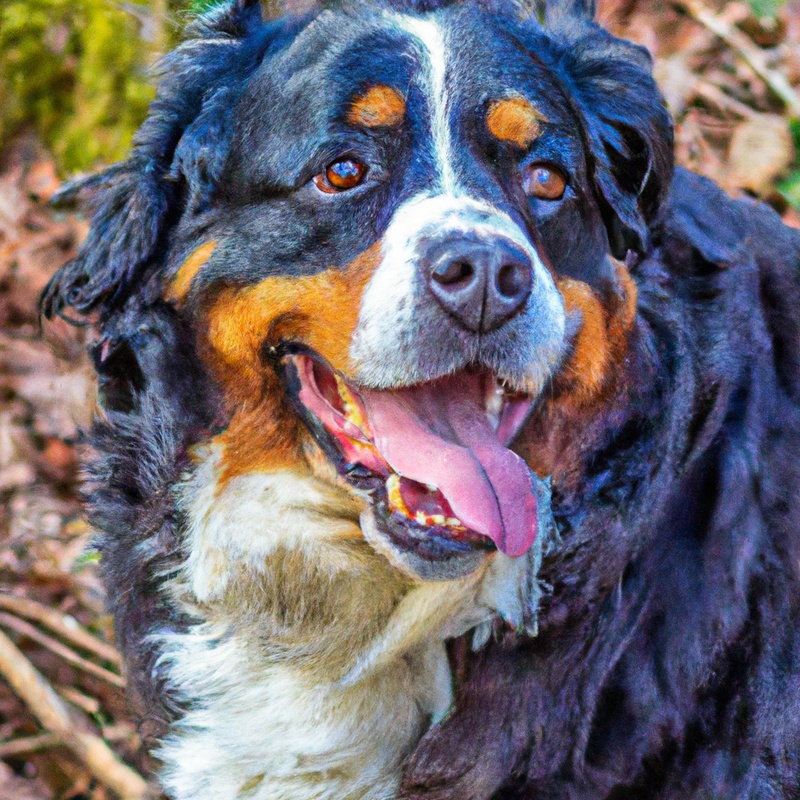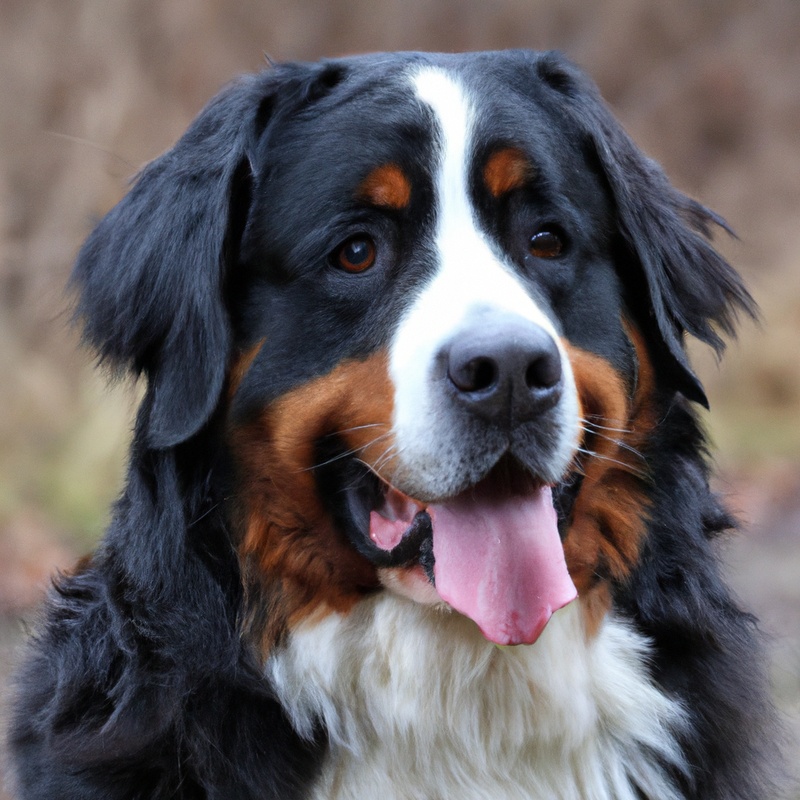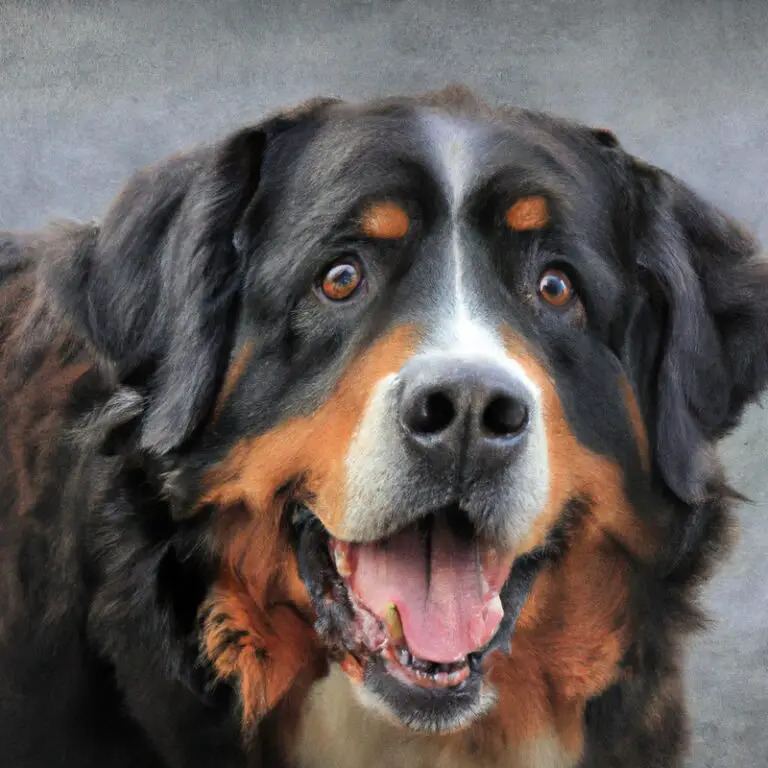What Are The Best Practices For Crate Training a Bernese Mountain Dog Puppy?
Key Takeaways:
- Start crate training early to establish a positive association with the crate.
- Make the crate a comfortable and inviting space for the Bernese Mountain Dog puppy.
- Use positive reinforcement and rewards to encourage the puppy to enter and stay in the crate.
- Gradually increase the duration of crate time to avoid anxiety or distress for the puppy.
Are you a proud owner of a Bernese Mountain Dog puppy? If so, then you’re probably eager to ensure their happiness, safety, and well-being.
That’s where crate training comes in.
As an expert in Bernese Mountain Dog care, I know just how valuable crate training can be for these adorable and active pups. In this blog article, I will share the best practices for crate training your Bernese Mountain Dog puppy, from choosing the right crate to troubleshooting common challenges.
Get ready to discover the secrets to successful crate training that will benefit both you and your furry friend!
| Best Practices for Crate Training a Bernese Mountain Dog Puppy |
|---|
| 1. Start Early: Introduce the crate to your puppy as soon as you bring them home. |
| 2. Make It Comfortable: Provide a soft blanket or bed and some toys to make the crate inviting. |
| 3. Positive Association: Use treats and praise to create a positive association with the crate. |
| 4. Gradual Introductions: Start with short periods of crate time and gradually increase the duration. |
| 5. Never Force: Never force your puppy into the crate; always make it their safe and comfortable space. |
| 6. Establish a Routine: Create a consistent schedule for crate time, including regular feeding and bathroom breaks. |
| 7. Use Positive Reinforcement: Reward your puppy for entering and staying calmly in the crate. |
| 8. Ignore Whining or Barking: Avoid giving attention when your puppy is whining or barking; wait until they are quiet before releasing them from the crate. |
| 9. Safety First: Ensure the crate is secure and free from any possible hazards. |
| 10. Patience and Consistency: Crate training takes time, so be patient and consistent in your approach. |
Why crate training is important for Bernese Mountain Dog puppies
Benefits of crate training for Bernese Mountain Dog puppies
Crate training offers several benefits for Bernese Mountain Dog puppies.
- Safe space: A crate provides a secure and comforting den-like environment where your puppy can feel protected and relaxed.
- Potty training: Crate training helps with housebreaking as puppies learn to hold their bladder and bowel movements until they’re taken outside.
- Prevents destructive behavior: When left unsupervised, puppies may chew on furniture or other household items. A crate helps them develop good behavior habits and prevents damage.
- Travel convenience: Crate-trained puppies are more comfortable and less stressed during car rides or when traveling by air.
- Easy supervision: It’s easier to monitor your puppy’s activities when they’re contained in a crate, reducing the chances of accidents or getting into dangerous situations.
- Transition assistance: Crate training prepares your puppy for situations like vet visits, boarding, or staying with friends, as they’re already accustomed to being in a crate.
Remember, crate training should be done gradually and with positive reinforcement to ensure it’s a positive experience for your Bernese Mountain Dog puppy.
Preparing for crate training
Choosing the right crate for your Bernese Mountain Dog puppy
Choosing the right crate for your Bernese Mountain Dog puppy is important to ensure their comfort and security.
Consider a crate size that allows your puppy to stand, turn around, and lie down comfortably.
Opt for a durable and sturdy crate made of materials such as metal or high-quality plastic.
Make sure the crate has proper ventilation and secure latches.
You can also add bedding and toys to make it cozy and inviting.
Gradually introduce your puppy to the crate to help them associate it with positive experiences.

Setting up the crate in a suitable location
To set up the crate in a suitable location for your Bernese Mountain Dog puppy, consider these tips:
- Find a quiet and calm area in your home where the puppy can rest undisturbed.
- Place the crate away from drafts or direct sunlight to ensure comfort.
- Ensure the crate is large enough for the puppy to stand, turn around, and lie down comfortably.
- Add cozy bedding and a few toys to make the crate inviting.
- Keep the crate close to where the family spends time, so the puppy feels included.
- Avoid placing the crate in a high-traffic area to prevent unnecessary stress.
- Make sure the location allows for easy cleaning and access for bathroom breaks.
Introducing your Bernese Mountain Dog puppy to the crate
The key to introducing your Bernese Mountain Dog puppy to the crate is to make it a positive and comfortable experience. Start by placing treats and toys inside the crate to encourage your puppy to explore.
Gradually increase the amount of time your puppy spends in the crate, rewarding them for calm behavior.
Avoid forcing your puppy into the crate or using it as a punishment. Make the crate cozy and inviting with a soft bed or blanket.
Repeat this process consistently, and your puppy will soon view the crate as their safe and secure den.

Step-by-step guide to crate training a Bernese Mountain Dog puppy
Creating a positive association with the crate
Creating a positive association with the crate is essential for successful crate training.
Start by placing treats, toys, and food inside the crate to make it inviting.
Leave the crate door open at first, allowing your Bernese Mountain Dog puppy to explore it freely.
Gradually encourage them to spend more time in the crate, praising them whenever they enter willingly.
Avoid using the crate as a form of punishment.
With time and patience, your puppy will develop a positive mindset towards the crate.
Gradually increasing crate time
When crate training a Bernese Mountain Dog puppy, it’s important to gradually increase the amount of time they spend in the crate.
Start by keeping the puppy in the crate for short periods, such as 5-10 minutes, and gradually extend the time as they become more comfortable.
Always make sure the crate is a positive and inviting environment, using treats and toys to create a positive association.
Avoid rushing the process and be patient with your puppy’s progress.
It’s important to create a safe and secure space for your puppy to feel comfortable in their crate.
Using crate as a safe space and retreat for your puppy
When crate training your Bernese Mountain Dog puppy, using the crate as a safe space and retreat is important.
Here’s how you can do it:
- Introduce the crate as a positive space from the beginning. Make it cozy with soft bedding and toys.
- Encourage your puppy to enter the crate voluntarily by tossing treats or toys inside. Reward them when they go in.
- Use positive reinforcement to associate the crate with positivity. Give treats and praise when your puppy is calm and relaxed in the crate.
- Never use the crate as a form of punishment. It should always be a safe and enjoyable space for your puppy.
- Gradually increase the duration of time your puppy spends in the crate, starting with short periods and gradually working up to longer ones.
- Allow your puppy to use the crate as a retreat whenever they want. Keep the crate door open so they can go in and out as they please.
- Avoid forcing your puppy into the crate or using it to confine them for long periods. It should be a voluntary and pleasant experience for them.
Remember, the crate should be a positive and safe space for your Bernese Mountain Dog puppy to relax and feel secure.

Avoiding punishment in the crate
When crate training your Bernese Mountain Dog puppy, it’s important to avoid using the crate as a form of punishment. Punishing your puppy in the crate can create negative associations and make them fearful or anxious about being confined.
Instead, focus on creating a positive and safe environment in the crate.
Use treats, toys, and praise to help them associate the crate with positive experiences. Gradually increase the amount of time they spend in the crate and make it a comfortable and enjoyable space for them.
Establishing a consistent crate routine
To establish a consistent crate routine for your Bernese Mountain Dog puppy, start by making the crate a positive and comfortable space. Introduce your pup to the crate gradually, using treats and praise.
Use consistent cues, such as a specific word or phrase, to signal crate time.
Keep a consistent schedule for feeding, playtime, and potty breaks to help your puppy associate the crate with routine and predictability. Be patient and consistent, and remember to never use the crate as punishment.
Troubleshooting common crate training challenges
Puppy whining or crying in the crate
If your Bernese Mountain Dog puppy is whining or crying in the crate, it’s important to understand the underlying reasons for this behavior. Firstly, ensure that your puppy’s physical needs are met by providing food, water, and bathroom breaks before crate time.
Additionally, create a comfortable and inviting crate environment with soft bedding and toys.
Secondly, gradually introduce the crate to your puppy, starting with short periods of time and gradually increasing. Thirdly, provide positive reinforcement and rewards for calm behavior in the crate.
Remember to be patient and consistent in your approach.
Difficulty with potty training in the crate
If you’re having trouble with potty training in the crate, don’t worry. It’s a common challenge.
One thing you can do is make sure the crate is the right size for your Bernese Mountain Dog puppy.
It should be large enough for them to stand, turn around, and lie down comfortably, but not so big that they can potty in one corner and sleep in the other. Another helpful tip is to establish a consistent potty schedule and take your puppy outside frequently.
Lastly, remember to be patient and consistent in your training efforts.
Eventually, your puppy will learn to associate the crate with potty-free time.
Barking or aggression towards the crate
If your Bernese Mountain Dog puppy is exhibiting barking or aggression towards the crate, it’s important to address the issue promptly. Start by ensuring that the crate is comfortable and inviting with soft bedding and enticing treats.
Gradually introduce your puppy to the crate, using positive reinforcement and rewards.
Avoid using the crate as a punishment, as this can create negative associations. Seek guidance from a professional dog trainer if the problem persists.
Escape attempts or destructive behavior in the crate
Escape attempts or destructive behavior in the crate can be challenging to deal with when crate training a Bernese Mountain Dog puppy. Here are a few tips to address these issues:
- Ensure the crate is the right size: A crate that is too small can make your puppy feel confined and anxious, leading to escape attempts. On the other hand, a crate that is too big may encourage destructive behavior. Choose a crate that provides enough space for your puppy to stand, turn around, and lie down comfortably.
- Gradually increase crate time: If your puppy is having escape attempts or demonstrating destructive behavior, it may indicate that they are not yet comfortable with being in the crate for extended periods. Start by gradually increasing crate time while providing positive reinforcement and treats to create positive associations with the crate.
- Provide mental stimulation: A bored puppy is more likely to engage in destructive behaviors. Make sure your puppy has plenty of mental stimulation, such as interactive toys and puzzle feeders, to keep them occupied while in the crate.
- Use positive reinforcement: Reward your puppy for calm and quiet behavior in the crate. This can help reinforce positive associations with being in the crate and discourage escape attempts or destructive behavior.
- Consider professional help: If you’re facing persistent challenges with escape attempts or destructive behavior in the crate, don’t hesitate to consult a professional dog trainer or behaviorist. They can provide guidance tailored to your specific situation.
Remember, patience and consistency are key when addressing escape attempts or destructive behavior in the crate. With time and the right approach, your Bernese Mountain Dog puppy can learn to be comfortable and well-behaved in their crate.
Gradual transition from crate to free roaming
Gradually increasing freedom outside of the crate
When your Bernese Mountain Dog puppy is comfortable and relaxed in the crate, you can gradually start increasing their freedom outside of it.
Begin by opening the crate door while your puppy is still inside, allowing them to come out on their own.
Then, you can extend their time outside the crate, supervised, while ensuring they have a safe and secured environment.
gradually increase the area your puppy can explore, using baby gates or playpens to limit access to certain parts of your home.
Keep a close eye on them as they explore and gradually increase their unsupervised time outside of the crate.
Consistency and patience are key!
Supervision and management during the transition period
During the transition period from crate to free roaming, it is important to supervise and manage your Bernese Mountain Dog puppy.
This means keeping a close eye on them to ensure they don’t engage in any undesirable behaviors or get into any dangerous situations.
Always be present when your puppy is outside of the crate and set up a safe, puppy-proofed area for them to explore.
Keep them on a leash or in a gated area when necessary, and gradually increase their freedom as they demonstrate good behavior and stay out of trouble.
Ensuring a safe and puppy-proof environment
To ensure a safe and puppy-proof environment for your Bernese Mountain Dog puppy, there are a few key steps you can take:
- Remove any hazards: Make sure to remove any potential dangers or items that your puppy could chew on, such as electrical cords, toxic plants, or small objects.
- Secure the space: Create boundaries using baby gates or exercise pens to confine your puppy to a safe area where they can play and explore without the risk of getting into trouble.
- Hide or secure wires: Keep wires and cables out of your puppy’s reach by hiding them or using cord protectors.
- Lock away cleaning supplies: Store cleaning products and chemicals in a locked cabinet to prevent your puppy from accidentally ingesting them.
- Provide appropriate toys: Offer plenty of safe and durable toys for your puppy to chew on and play with to redirect their chewing behavior away from your furniture or belongings.
By taking these steps, you can create a puppy-proof environment that keeps your Bernese Mountain Dog puppy safe and gives you peace of mind.
Frequently Asked Questions (FAQs) about crate training Bernese Mountain Dog puppies
How long should I leave my Bernese Mountain Dog puppy in the crate?
When crate training your Bernese Mountain Dog puppy, it’s important to gradually increase the time they spend in the crate. Start with short periods, such as 10 to 15 minutes, and gradually extend it as they become more comfortable.
However, puppies should not be left in the crate for more than 3 to 4 hours at a time, as they need regular bathroom breaks and social interaction.
Be mindful of their age and bladder capacity when determining how long to leave them in the crate.
Can I use the crate for punishment?
Using the crate for punishment is not recommended. The crate should be a positive and safe space for your Bernese Mountain Dog puppy.
Using it as punishment may create negative associations and make crate training more challenging.
Instead, focus on positive reinforcement and rewards when using the crate. Make it a comfortable and inviting place for your puppy to rest and relax.
What if my Bernese Mountain Dog puppy doesn’t like the crate?
If your Bernese Mountain Dog puppy doesn’t like the crate, it’s important to take a gradual and positive approach.
Start by making the crate a comfortable and inviting space with soft bedding and toys.
Never force your puppy into the crate or use it as a form of punishment.
Instead, use treats and praise to encourage your puppy to go inside voluntarily.
Slowly increase the amount of time your puppy spends in the crate, rewarding them for calm behavior.
With patience and consistency, most puppies can learn to love their crate.
Is crate training necessary for Bernese Mountain Dog puppies?
Crate training is not necessary for Bernese Mountain Dog puppies, but it can be a useful tool for house training and providing a safe space for your puppy. Crates can help prevent accidents and keep your puppy out of trouble when you’re not able to supervise them.
However, it’s important to introduce the crate gradually and make it a positive and comfortable place for your puppy.
Always supervise your puppy when they’re in the crate and never use it as a punishment.
Final Verdict
Crate training is a crucial and beneficial practice for Bernese Mountain Dog puppies. It provides them with a safe and comfortable space, helps with potty training and preventing destructive behavior, and can be a useful tool for managing their behavior throughout their lives.
By following the steps and guidelines outlined in this article, you can successfully crate train your Bernese Mountain Dog puppy and set them up for a happy and well-adjusted future.
Remember, patience, consistency, and positive reinforcement are key to crate training success. Happy training!







